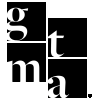WORKING WITH MEDIA STRATEGY- UNDERSTANDING CAMPAIGN OPTIMIZATIONS FOR COMMON CAMPAIGN PERFORMANCE ISSUES
LOW CTR
Definition: CTR is the number of clicks a link receives (whether from an ad, CTA button, or a hyperlink), divided by the number of times your ad or content is shown: clicks ÷ impressions = CTR (expressed as a percentage). For example, if you had 5 clicks and 100 impressions, then CTR would be 0.05 or 5 CTR%.
Context: Click Through Rates (CTR) vary by industry, ad channel, ad format, and target audience. So it’s important to understand the average CTR for the specific network and type of ad first so the client expectations can be aligned with that.
IFTTT Tips:
- Is the campaign underperforming against the benchmark(s)?
- Check benchmarks for ad channels (e.g. Google search, Meta, YouTube, etc.) as well as for ad format (text ad, static display, video, etc.).
- Make sure you are NOT looking at a blended rate including both display and search. Look at campaigns separately to see how they perform vs. averages.
- Are there optimizations that could be made to refine and/or re-scope the audience to reach the right users/prospects?
- Check the size and parameters of the targeted audience (demographics, interests, locations and/or geo-pins, job titles, etc.).
- Is your headline and/or copy not appealing or effective?
- Check keywords for relevance, inc. negative exclusions.
- Check headlines and ad copy for grammar, tone, length, and appeal.
- Check ad copy to match user search intent and buying considerations.
LOW CONVERSION RATE
Definition: Conversion Rate measures the number of completed conversion actions on an ad, email, or website landing page, divided by the total audience number or users: completed actions ÷ total user audience = conversion rate (expressed as a percentage). For example, if you had 800 CTA button clicks out of 20,000 visitors to that landing page, then the conversion rate would be 0.04 or 4% conversion rate.
Context: There isn’t a single conversion rate that can be used to define success across the advertising industry, but research into industry benchmarks and vertical-specific conversion expectations can help. Conversion rates are an effective way of comparing and contrasting the performance of multiple advertising channels, and of estimating a ROAS (return on ad spend). A low conversion rate may also indicate issues for improvement.
IFTTT Tips:
- Optimize the landing page (layout, forms, CTAs).
- Simplify the CTAs down to a primary call-to-action for conversion tracking.
- Check the audience targeting relevance so we aren’t bringing in unqualified leads.
- Refine the unique selling proposition (USP) or benefits.
HIGHER THAN AVERAGE CPC
Definition: Average cost-per-click (avg. CPC) is calculated by dividing the total cost of your clicks by the total number of clicks. Your average CPC is based on your actual cost-per-click (actual CPC), which is the actual amount you're charged for a click on your ad.
Context: The CPC can vary depending on factors such as keyword competitiveness, ad quality, and bidding strategy. Average CPC may also vary by industry, ad channel, ad format, and target audience. A higher CPC generally means the advertiser is paying more for each click, which can be harmful in terms of cost efficiency.
IFTTT Tips:
- Is the campaign underperforming against the competitive benchmark(s)?
- Check benchmarks for ad channels (e.g. Google search, Meta, YouTube, etc.) as well as for ad format (text ad, static display, video, etc.) for the industry vertical.
- Check and improve ad quality scores.
- Check and improve landing page quality.
- Check and improve CTR.
- Bid on longer-tail keywords.
- Do a negative keyword audit, and/or consider pausing or reducing broad match terms.
HIGH COST PER LEAD / COSTS INCREASED OVERALL
Definition: The cost per lead (CPL) is the amount of money it takes to generate a new prospective customer for your sales team from a current marketing campaign.
Context: Cost Per Lead should be relative to the product cost/customer value. The higher the sales price and/or lifetime customer value, the higher the average acceptable cost per lead.
IFTTT Tips:
- High CTR may result in lower conversion rate, which drives up the cost per lead.
- Add in negative keywords, check audience targeting as well to ensure quality of leads.
- Check pre-qualifications for lead quality.
- Perhaps competition has increased due to seasonality, new competitors in the target area, or more competitive ad spend?
- Check the “Impressions share lost to budget” to consider raising overall spend.
